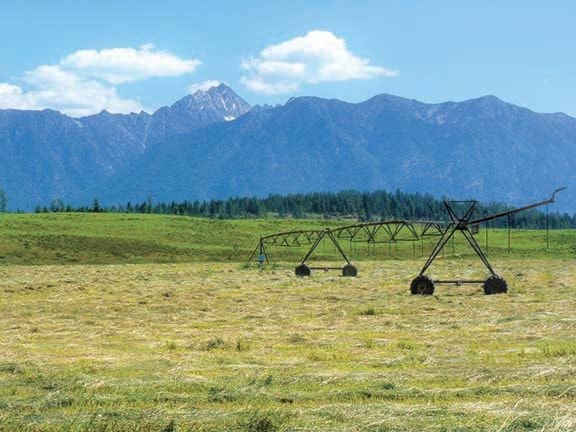Efforts by the City of Cranbrook to install a groundwater well at the spray irrigation fields for cattle drinking water have proved unsuccessful.
Cranbrook's filtered effluent is piped to 2,200 acres of agricultural fields outside the city where it is used as irrigation for cattle grazing pastures and hayfields. Six ranchers range about 780 head of cattle on the spray irrigation fields under a contract with the city.
However, annual sampling at the G1 Ponds, one area of the fields, has found that water drunk by the cattle is non-compliant with guidelines.
In August 2012, the Ministry of Environment wrote to the City of Cranbrook advising that cattle should not be allowed to drink water at the G1 Pond.
"The G1 Pond is located directly under a pivot and the U.S. EPA guidelines are consistently exceeded due to agricultural runoff. Cattle should be restricted from direct access to the G1 Pond," wrote the MOE's Chris Stroich.
The city's 2011 Annual Report on the Spray Irrigation Field reported 79,000 total coliforms per 100 millilitres at the G1 Ponds, sampled on September 2, 2011.
The U.S. Environmental Protection Agency set guidelines in 1973 that livestock drinking water should not exceed 5,000 total coliforms per 100 ml.
Upon the request of Mayor Wayne Stetski, public health veterinarian Dr. Brian R. Radke evaluated the 2010 annual report, which found total coliforms of 64,000 per 100 ml at the G1 Ponds on September 16, 2010. Dr. Radke recommended that cattle not be allowed access to drinking water that fails to meet the EPA's guidelines.
"I would not recommend using drinking water that consistently (for two consecutive samples) fails to meet the guidelines or if an individual sample greatly exceeds the guidelines (for example, if the total coliform count is 20,000/100 ml, or if the fecal coliform is 4,000/100 ml). The G1 Ponds sample results for 2009 (a single sample) and 2010 (all six samples) do not meet these criteria," wrote Dr. Radke.
Earlier in the autumn, the city hired a drilling contractor to install a groundwater well at the G1 Ponds. However, chief administrative officer Wayne Staudt told city council on Monday, October 1 that the contractor did not find water at the site.
"Unfortunately we drilled to a depth of 520 feet and didn't find any water so we have suspended that drilling for the time being and we are going to look at other options of providing water to the cattle out there," said Staudt.
Drilling deeper is cost prohibitive, he went on, and the exploratory drilling has already cost between $8,000 and $10,000.
"After 500 feet, the cost of the equipment that is necessary to operate the well gets very, very expensive – a much larger motor and stainless steel casting has to be used. The additional cost to make the well functional is also very large."
The city will look into other ways of getting clean drinking water for livestock to the site, Staudt confirmed.
"We have been criticized by a few people for not providing fresh drinking water to the cattle. I believe this is the first time the city has drilled in an attempt to find fresh water. I think this council deserves some credit for spending this amount of money to do this and I hope our critics will take note," Councillor Gerry Warner said in response.
